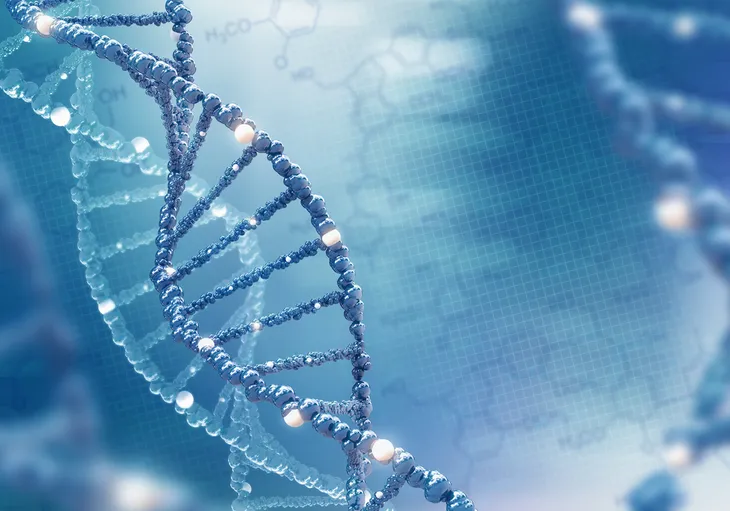- Polycystic kidney disease is a genetic disorder that causes cysts to develop and grow in the kidneys.
- Roughly 600,00 individuals have PKD in the United States and it’s the fourth leading cause of kidney failure.
- While there is no cure, there are treatment strategies available to help you manage the disease.
Polycystic kidney disease, also known as PKD, is a genetic disorder that causes numerous cysts to grow in the kidneys. Over time, these cysts can grow too large or out of control, overtaking the kidneys and eventually, causing damage.
PKD can lead to serious complications like kidney failure, and most people will end up needing dialysis or a kidney transplant, says the Cleveland Clinic. All the more reason to get informed. Let’s take a look at what you need to know about polycystic kidney disease, including the common signs and symptoms, causes, and treatment options.
What Is Polycystic Kidney Disease?
Polycystic kidney disease is a genetic disorder that causes cysts to develop and grow in the kidneys. The National Kidney Foundation says the cysts are filled with fluid and if they grow too large, or if too many grow they can slowly replace the kidneys and ultimately reduce kidney function.
Roughly 600,00 individuals have PKD in the United States and it’s the fourth leading cause of kidney failure. It also develops equally in both men and women, and is found in all races, says the source.
The Types of Polycystic Kidney Disease
There are two types of polycystic kidney disease: autosomal dominant polycystic kidney disease (ADPKD) and autosomal recessive polycystic kidney disease (ARPKD). ADPKD is the most common form, says the Cleveland Clinic, and is typically diagnosed in adulthood around age 30 to 50, however, it can also develop in children and young adulthood too.
ARPKD, on the other hand, is rarer. It’s also known as infantile PKD and causes “abnormal kidney development in the womb or soon after birth,” explains the source.
Common Symptoms of Polycystic Kidney Disease
Healthline points out that many individuals live with polycystic kidney disease for years before they develop any symptoms. Cysts usually grow to about 0.5-inches or larger before an individual starts noticing symptoms. That said some common symptoms to be on the lookout for include:
- fatigue
- tenderness or pain in the abdomen
- pain in the sides or back
- kidney stones
- frequent urination
- blood in the urine (hematuria)
- urinary tract infection (UTI)
- joint pain
- nail abnormalities
- pale skin color
- skin that is prone to bruising
It’s worth noting, many of these symptoms can be signs of other underlying conditions, so it’s always important to inform your doctor of abnormal symptoms to find out the root cause.
Symptoms in Infants and Children
Infants and children may experience different symptoms of polycystic kidney disease and it’s important to be aware of these too. The Cleveland Clinic says that signs of ADPKD in a fetus are enlarged kidneys, low amniotic fluid levels, and growth failure (low birth weight). Your doctor will monitor the growth of your fetus and be on the lookout for abnormalities.
If a child has polycystic kidney disease, they may have high blood pressure, experience frequent urination, or develop a UTI. If your child is at risk for PKD be on the lookout for these signs and inform your doctor right away if they develop.
When to See a Doctor
If you or your child develops any symptoms of polycystic kidney disease, contact your doctor right away for a proper diagnosis. The Mayo Clinic also says you should contact your doctor if you have a “first-degree relative — parent, sibling or child” with PKD so you can discuss screening for this disorder.
If you have PKD and develop severe symptoms such as confusion; chest pain; shortness of breath; an inability to urinate; or if you develop swollen legs, ankles, or feet, you should contact your doctor right away.
What Causes Polycystic Kidney Disease?
Polycystic kidney disease is a genetic disorder which means it is caused by abnormal genes that run in families. Although, the Mayo Clinic points out that in some cases, a gene mutation can occur on its own, known as spontaneous. This also means that neither parent has a copy of the mutated gene.
The source also says the two main types of PKD are caused by different genetic defects. For starters, in ADPKD, only one parent needs to carry the disease to be able to pass it on to their children. Each child will have a 50-percent risk of getting the disease. In contrast, ARPKD requires both parents to have the abnormal genes to pass it on to their children and even if both parents do carry the mutated genes, the child only has a 25-percent chance of developing the disease.
The Complications of Polycystic Kidney Disease
It’s important to get polycystic kidney disease under control because it can lead to serious complications for both infants and adults. Some possible complications that can occur in adults include a brain aneurysm, heart valve problems, kidney failure, kidney stones, and cysts in the liver or pancreas. Colon issues, high blood pressure, preeclampsia during pregnancy, and urinary tract infections (UTIs) are also possible complications.
The Cleveland Clinic says there are specific complications that can occur in babies who have PKD. For example, they may have breathing problems, which are caused by underdeveloped lungs. Liver issues, kidney failure, and high blood pressure are also possible.
Diagnosing Polycystic Kidney Disease
If you or your child develop symptoms of polycystic kidney disease, talk to your doctor for a proper diagnosis and treatment plan. To diagnose PKD your doctor will start by reviewing your family history. They may also perform a variety of tests to rule out other causes.
Healthline says to diagnose all types of PKD your doctor may use imaging tests to look for cysts in the kidneys, liver, as well as other organs. Some examples include an ultrasound, computed tomography (CT) scan, and magnetic resonance imaging (MRI) scan. An intravenous pyelogram may also be necessary which uses “dye to make your blood vessels show up more clearly on an X-ray,” explains the source.
Finally, your doctor may also recommend genetic testing, through a blood or saliva test. This test looks for the mutated genes that cause the disease.
Treatment Options
Currently, there is no cure for polycystic kidney disease, however, the goal of treatment is to help manage your symptoms and prevent complications. Healthline says one of the most important parts of treatment is controlling high blood pressure.
To manage the symptoms of PKD your doctor may recommend pain medication, however, it’s important to follow their guidance as some medications can worsen the disease. Blood pressure medication, antibiotics, and diuretics may also be part of your treatment plan. Furthermore, your doctor may also recommend a low-sodium diet and in some cases, surgery may be necessary to drain cysts and relieve pain.
In advanced cases of the disease, the source says one or both kidneys may need to be removed and dialysis and kidney transplant may be required. Work with your doctor to find the best treatment plan for you.
How to Cope
A PKD diagnosis can be overwhelming and emotional. To help you cope, reach out to a support group. Talking with family and friends may also be helpful.
Your doctor may also recommend that you work with a dietician to adjust your diet to maintain healthy blood pressure levels. The National Institute of Diabetes, Digestive, and Kidney Disease (NIDDK) says other lifestyle adjustments may also be necessary, such as exercising for at least 30-minutes or more most days of the week. Losing weight, quitting smoking, reducing stress, and getting better sleep every night may also be a part of your treatment plan.
Can Polycystic Kidney Disease Be Prevented?
There is no cure for polycystic kidney disease and it, unfortunately, isn’t preventable either. That said, the Cleveland Clinic says you may be able to slow the progression of the disease or prevent kidney failure by leading a healthy lifestyle. Some of these steps include maintaining a healthy weight, exercising regularly, eating a wholesome (and in some cases, low-salt) diet, and quitting smoking. Talk to your doctor to find out what steps you can start taking to stay healthy.
Furthermore, the Mayo Clinic also says, if you’re considering having kids, you can consult a genetic counselor to help you assess your risk of passing the disease off to your children.
What Is the Outlook?
If the disease is managed, adults with polycystic kidney disease can expect a very positive outlook and live a healthy and full life. However, the disease does get worse over time. The National Kidney Foundation says roughly 50-percent of individuals with PKD will develop kidney failure by age 60 and will require dialysis or a kidney transplant.
The outlook of PKD in children isn’t as good. The Cleveland Clinic says “one-third of all infants born with ARPKD don’t survive.” For the babies that do survive, they will likely need treatment for the rest of their lives.















